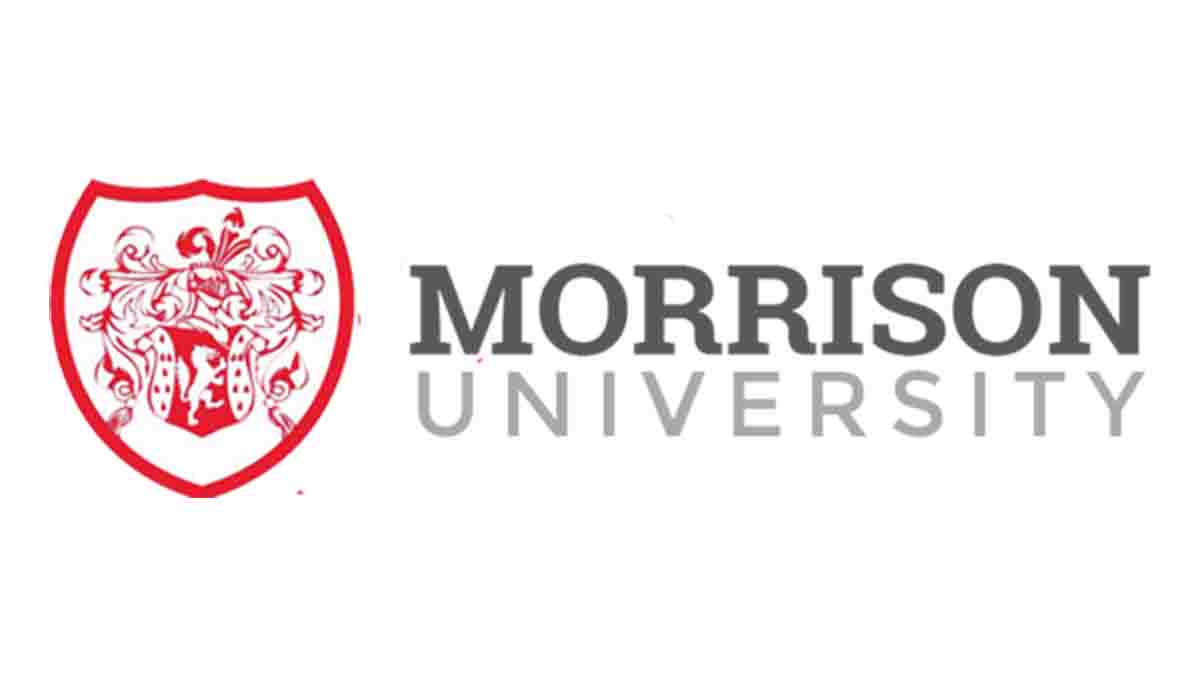The U.S. Green Building Council (USGBC) developed the LEED certification to encourage eco-friendly construction methods.
Whether you are an architect, building owner, engineer, or someone interested in sustainable design, this information will provide valuable insights into the world of LEED Certification and its impact on the future of buildings.
What is LEED?
LEED Stands for Leadership in Energy and Environmental Design.
The U.S. Green Building Council (USGBC) created LEED, a certification system for environmentally friendly buildings.
It provides a framework for evaluating and recognizing buildings designed, constructed, operated, and maintained, focusing on sustainability and environmental responsibility.
The LEED certification aims to decrease the environmental impact of building construction and maintenance.
It sets a high standard for energy efficiency, resource conservation, water efficiency, indoor environmental quality, and sustainable site development.
By pursuing LEED Certification, building owners, architects, and other professionals demonstrate their commitment to sustainable building practices, environmental stewardship, and creating healthier spaces for occupants.
Importance and Benefits of LEED Certification
LEED Certification is essential in the construction and building industries, as it offers many benefits for building owners, occupants, and the environment.
Here are some key reasons why LEED Certification is essential and the benefits it provides:
1. Environmental Impact:
LEED Certification promotes sustainable building practices that help minimize the environmental impact of buildings.
By implementing energy-efficient systems, using renewable energy sources, conserving water, reducing waste, and selecting environmentally friendly materials, LEED-certified buildings contribute to reducing carbon emissions, conserving resources, and protecting ecosystems.
2. Energy Efficiency:
LEED optimizes energy performance, encouraging energy-efficient technologies and strategies.
Cutting energy usage and greenhouse gas emissions can help prevent climate change and reduce dependency on non-renewable energy sources.
Energy-efficient buildings also benefit from lower utility costs, resulting in long-term financial savings for owners and occupants.
3. Health and Well-Being:
LEED Certification prioritizes indoor environmental quality, promoting occupant health and well-being.
By addressing factors such as indoor air quality, natural lighting, acoustics, and the use of non-toxic materials, LEED-certified buildings provide healthier and more comfortable indoor environments.
Improving this can increase occupant productivity, satisfaction, and overall quality of life.
4. Water Conservation:
Water scarcity is a global concern, and LEED Certification encourages water efficiency and conservation measures.
LEED-certified buildings use efficient fixtures, innovative water technologies, and landscaping strategies to reduce water consumption.
Doing this can help sustain water resources and reduce the pressure on local water sources.
5. Sustainable Site Development:
LEED promotes responsible site selection and development practices.
By considering factors such as site location, transportation options, access to public amenities, and minimizing site disturbance, LEED-certified projects help create more sustainable and integrated communities.
6. Marketability and Value:
LEED Certification enhances the marketability and value of buildings.
Green buildings have demonstrated increased market demand and higher occupancy rates.
The certification provides a recognized and trusted standard that signals to potential tenants, investors, and occupants that the building meets rigorous sustainability criteria, leading to a competitive edge in the market.
LEED Certification Categories and Levels
LEED Certification offers a comprehensive rating system that evaluates buildings based on various criteria across several categories.
These categories include:
1. Sustainable Site Development:
This category encourages selecting environmentally responsible building sites, minimizing the impact on ecosystems, and promoting sustainable transportation options.
2. Water Efficiency:
This category promotes water conservation through efficient landscaping, innovative technologies, and reduced water consumption.
3. Energy and Atmosphere:
This category focuses on optimizing energy performance, using renewable energy sources, implementing energy-efficient systems, and reducing greenhouse gas emissions.
4. Materials and Resources:
This category encourages sustainable material selection, waste reduction, recycling, and using local and environmentally friendly materials.
5. Indoor Environmental Quality:
This category emphasizes occupant health and well-being by addressing indoor air quality, natural lighting, acoustics and promoting non-toxic materials.
6. Innovation in Design:
This category recognizes innovative strategies and technologies beyond the standard LEED requirements to enhance sustainability further.
LEED Certification follows a point-based system, where projects earn points based on compliance with each category’s criteria.
The number of points accumulated determines the level of certification a building can achieve: Certified, Silver, Gold, or Platinum.
LEED Certification Exams: Types and Format
LEED Certification exams assess an individual’s knowledge and understanding of the LEED rating systems, sustainability concepts, and the green building industry.
These exams are administered by the Green Business Certification Inc. (GBCI), the organization responsible for overseeing LEED Certification.
Here are the types and formats of LEED Certification exams:
1. LEED Green Associate Exam:
Exam Type:
The LEED Green Associate exam is the first step towards becoming a LEED professional.
It tests general knowledge of green building practices, LEED rating systems, and basic sustainability principles.
Format:
The exam consists of multiple-choice questions and is computer-based. It is typically a two-hour exam, and the number of questions may vary.
2. LEED Accredited Professional (AP) Specialty Exams:
Exam Type:
LEED AP Specialty exams are designed for individuals seeking in-depth knowledge in specific LEED rating systems or specialized areas of green building.
Format:
These exams are also computer-based and typically comprise multiple-choice questions.
The number of questions and exam duration may vary depending on the specific specialty chosen.
Some common LEED AP Specialty exams include:
- Building Design + Construction (BD+C)
- Interior Design + Construction (ID+C)
- Operations + Maintenance (O+M)
- Neighborhood Development (ND)
- Homes
3. LEED Fellow Exam:
Exam Type:
The LEED Fellow exam is for individuals who have demonstrated exceptional leadership and impact in green building and sustainability.
Format:
The exam format may vary, but it generally consists of multiple-choice questions, essays, and case study evaluations.
It’s important to note that the specific exam content, question format, and passing score requirements may be subject to updates by the GBCI.
It is advisable to refer to the official GBCI website and exam resources for the most up-to-date information and exam preparation materials.
To prepare for the LEED exams, candidates can utilize various study resources provided by the USGBC and GBCI, such as study guides, reference materials, online courses, and practice exams.
These resources help individuals familiarize themselves with LEED concepts, rating systems, credits, and the documentation process.
Achieving LEED professional credentials through successful exam completion demonstrates an individual’s expertise in green building practices and sustainability principles.
It is a valuable qualification for professionals working in the green building industry, including architects, engineers, construction managers, facility managers, and sustainability consultants.
Read More:
- How Hard is the EKG Certification Test? (Reasons, Factors, FAQs)
- How To Become An Animal Chiropractor (Req, Skills, Job, FAQs)
- What is AMAP Certification? How to Get it (Tips, FAQs)
- 10 Major Jobs Similar To Firefighting (Jobs, Tips, FAQs)
- How To Become An Art Conservator (Reasons, Skills, FAQs)
- 3 College Degrees You Can Earn While Working a Full-Time Job
5 Common Challenges and Tips for Obtaining LEED Certification
Obtaining LEED Certification can present challenges due to the complexity of the certification process and the specific requirements of each LEED rating system.
However, we can solve these obstacles by thinking ahead and executing meticulously.
Outlined below are some typical obstacles on the path to LEED Certification and advice for overcoming them:
1. Understanding the LEED Rating System:
Familiarizing yourself with the chosen LEED rating system’s specific requirements and credit criteria is crucial.
Study the rating system thoroughly and seek clarification from LEED professionals or GBCI resources to ensure a clear understanding of the prerequisites and credits.
2. Documentation Management:
The LEED Certification process requires extensive documentation to support the achievement of specific credits.
Developing a systematic approach to collecting, organizing, and maintaining the necessary documentation throughout the project is essential.
Create a central repository for documents and establish a straightforward process for record-keeping and document control.
3. Integrating Sustainable Design Early:
Incorporate sustainable design principles and strategies into the project from the initial stages.
Early collaboration between project team members, including architects, engineers, and contractors, can help identify and address potential challenges related to LEED requirements.
Incorporating sustainable features at the beginning of a project can prevent expensive retrofits
down the line.
4. Resource Constraints:
Limited financial or personnel resources can present challenges in pursuing LEED Certification.
To address this, consider leveraging available resources effectively.
Engage with experienced professionals, seek guidance from LEED consultants or accredited professionals, and explore partnerships with organizations or individuals who have prior experience with LEED projects.
5. Changing Project Scope:
Changes in project scope, design alterations, or unexpected challenges can impact the pursuit of LEED Certification.
Maintain open lines of communication within the project team to promptly address any changes and their potential implications for LEED goals.
Adapt the project strategy and documentation to ensure compliance with the rating system.
Frequently Asked Questions (FAQs) on ‘What is LEED Certification? How to get it’
The acronym LEED stands for Leadership in Energy and Environmental Design.
The U.S. Green Building Council (USGBC) created a well-known green building certification program that encourages environmentally responsible behavior and sustainable building techniques.
LEED Certification offers numerous benefits, including reduced environmental impact, energy savings, improved indoor air quality, water conservation, marketability and value, regulatory incentives, and industry leadership in sustainable building practices.
LEED Certification has four levels: Certified, Silver, Gold, and Platinum
The timeline for obtaining LEED Certification varies depending on the project’s complexity, the readiness of the documentation, and the review process.
Conclusion
LEED Certification is a prestigious and widely recognized program that promotes sustainable building practices and environmental responsibility.
It provides a framework for evaluating and recognizing buildings that meet high energy efficiency standards, resource conservation, indoor environmental quality, and sustainable site development.
Awesome one; I hope this article answers your question.
Editor’s Recommendations:
- Is Online Forklift Certification Legit? (Yes/No, Worth, FAQs)
- How To Get ASE Certification (Benefits, Steps, FAQs)
- 9 Best Certifications For Remote Jobs (Tips, FAQs)
- How To Become A CIMI (Certification, Cost, FAQs)
- 15 Free Online Government Certifications In 2023 (FAQs)
If you find this article good, please share it with a friend.





